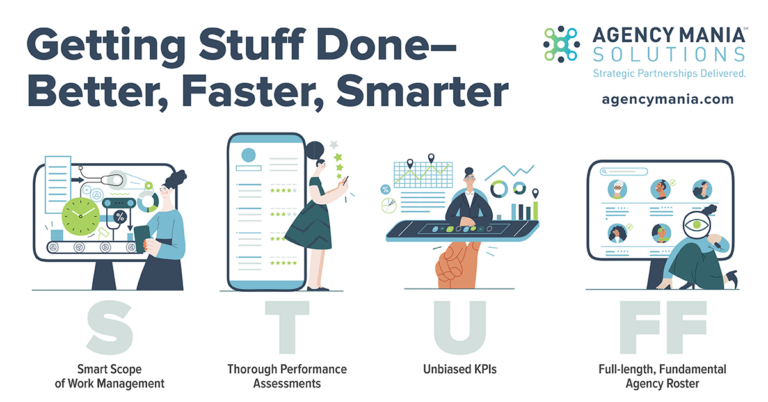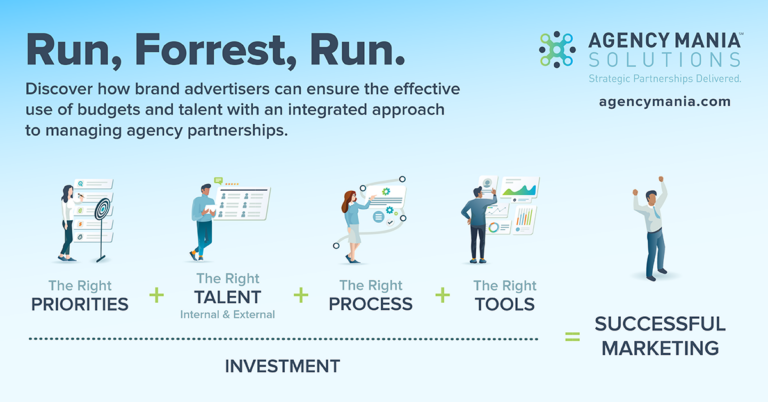Are Your Briefs Tight Enough?
I am not referring to briefs as the style of close-fitting, short, snug underwear commonly known as “jockey shorts” in the U.S. Instead, I am referring to the number one contributing factor to wasted marketing dollars and troubled client/agency relationships: briefs that are often way too loose, incomplete and seriously lack the necessary process rigor and discipline that effective brand advertisers and their agencies should expect.
Download a print-friendly version here
So if you haven’t asked yourself lately “Is our briefing of agencies strong enough?” you simply have missed out on the opportunity to get better output from your agencies and better mileage from your budget. Writing better briefs is about better work. It’s also about avoiding waste that results from poor guidance and projects that zig zag unnecessarily in agency hallways. In a prior post entitled “Can your relationship handle the IKEA meltdown?” I stressed that the highly stressful process of assembling IKEA furniture without clear directions was a good analogy to the continued disconnect clients and agencies are reporting as the primary source of their inefficiencies and misused efforts. In a recent study, as high as 73% of agencies claimed that clients were not doing a good enough job at briefing them, and this is not a new phenomenon. Another study showed that 53% of agencies found briefs lacking in focus, while 27% found them incomplete and inconsistent.
In the many 360-degree client/agency evaluations we have conducted on behalf of large brands over the past few years, we have heard agency comments like
- “We rarely receive briefs,”
- “Briefs should be more concise and have fewer, clearer objectives,”
- “Briefs are written as order forms instead of strategic assignments and stifle creativity,”
- “The briefs lack clear success metrics or budget parameters as the client used it to figure out their objectives,”
- “We (the agency) were asked to write the brief for a client too busy to write it,”
- “We often get asked to start work before getting any brief”
- “The brief was not written or didn’t get approved by those who will ultimately review the work and it changed once the project started.”
- And the list goes on and on.
The end result is a tragedy of Shakespearian measures: hundreds of millions of advertising dollars are going down the drain at a time when brands are pressured to do more with less. Here are some basic principles that will put brand advertisers on the right path and improve not only briefs themselves but also the process of briefing agencies:
Principle #1: Develop the brief collaboratively
Sloppy or unilaterally developed briefs always fail to deliver. The brief is a powerful communication and discovery tool between the client and the agency, not an email in someone’s inbox, a piece of paper on someone’s desk or a checkbox on a client to-do list. The brief is not meant to be a static, formal document but a dynamic, iterative, collaborative exchange. It’s meant to actively encourage strategic dialog and creative collaboration from the offset, communicate the client’s opportunity and provide clarity of purpose to the agency. Being open to collaborating on a brief requires trust and mutual respect. Talk about your ideas for the brief with your agency, exchange ideas and develop a stronger brief together.
Principle #2: State a challenge, not the solution
The brief must invite the agency to solve the stated business challenge. Too often, clients default to writing a list of marketing tactics for the agency to execute. The brief must encourage the agency to challenge any of the assumptions and give it room to think creatively about ways to get to the desired destination. The objectives must be SMART — specific, measurable, achievable, relevant and time-bound. It should be, well, “brief” too, and not drown the agency in useless or borderline relevant information. Finally, the brief and the process surrounding it must convey the passion and convictions of the client and inspire those who are engaged with the project. As a result, the brief must be the conduit for insight-rich, inspiring conversations throughout its creation and up to its completion. Is the agency jazzed about the assignment? Is the brief simple, yet audacious and exciting? If it isn’t, who’s to blame?
Principle #3: Invest time upfront
The more time, effort and information are invested upfront, the better the time savings throughout the entire process itself. Too many clients jump in to submitting the brief before having done their due diligence, seeking internal input from decision makers and other stakeholders, sending a brief only half-baked to the agency. Clients must know what they really are asking the agency to do — and not wait for the work to be already well under way to figure it out. They must also allow time for the agency to challenge it and ask insightful questions. Or even reject the brief if it doesn’t feel right or have what’s needed for the agency to proceed. Often times, the agency is also hesitant to take the effort to raise questions or concerns because time is of essence, and challenging the content might seem like political suicide or shortening the time they have to execute — often already too time constrained to allow for meaningful back and forth dialog. We must allow time for rebriefing or course correction when the dialog leads to a constructive, strategic change of direction.
Principle #4: Ensure clear decision-making
Having clear guiding principles on how the brief is vetted and approved is critical. Seeking internal alignment or dealing with potentially conflicting guidance by teams with various agendas can quickly complicate and confuse the agencies. Anything short of having clarity of role for who has ownership of the brief is looking for trouble. If others within the client organization are involved or asked to contribute to the brief, only one individual should facilitate the consolidation of internal feedback or be on point to communicate the final brief to the agency. The briefing process must allow enough time for that process to successfully unfold.
Principle #5: Standardize, streamline and automate
The lack of consistency and the manual, labor-intensive nature of briefings can also lead to slowing down the process from initiating the brief internally to finalizing it with the agency. The type of information required, regardless of marketing discipline, must be simplified and standardized so an advertiser has an expedient way to work with multiple agencies. If the brief is iterative, it requires a more dynamic way to handle versioning control, approvals and effective exchange of information between the client and the many agencies potentially involved. Thankfully, technology like BriefDeliver™ enables a more fluid and flexible flow of information that keeps everyone in the know and overcomes natural human obstacles associated with many moving parts, projects and large teams.
Bad briefs are a lose-lose proposition. Those are frustrating to agencies and cost clients excessive amounts of time and money — including agency rework, unnecessary meetings, conflicting strategic direction and pointless complications, delayed decision making and the resulting agency fees that go along. The art of briefing is not limited to the creative process of advertising and marketing. Every project starts with a brief, whether you are a designer, architect or a commissioned artist. Do not compromise. No brief, no work. Bad brief, redo it until you get it right. Exceptional work never happens without good briefing. So go ahead now, brief your way to marketing excellence.
By: Bruno Gralpois, Co-Founder & Principal









